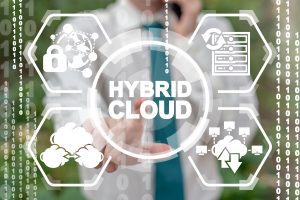The future of work: driving employee engagement in a hybrid working landscape

Stéphane Kirchacker, VP EMEA at Sinequa, takes a closer look at the key factors driving employee engagement in a hybrid work environment.
Over a year from the onset of the pandemic, remote working forms a significant part of our lives with 60 per cent of the UK population still working from home. Most organisations have adapted in some way in order to cater for the hybrid working environment.
With the vaccine rollout well underway, conversations are now centred around what the future holds for the modern working environment. Despite the clear value of technological solutions in supporting remote working, the challenges, such as productivity tax, increased loneliness and inaccessibility to information, have caused concern over the sustainability of the remote working model.
However, despite these associated challenges, flexible working is very much here to stay, with 93 per cent of business leaders planning to keep their workforce working remotely, or adopt a hybrid model in the future. This, therefore, suggests that employers are certain the benefits of remote working are greater than the disadvantages, or that the issues can be overcome with the right strategy.
So, what can business leaders do?
1. Cultivate an efficient digital working environment
If there has ever been a time to invest in the digital working environment, it is now. Implementing up-to-date systems and modern applications that foster productivity and collaboration will be sure to boost business performance in the long run. Providing employees with the right tools to perform day-to-day business activities while working remotely will ensure that the new remote work paradigm cannot hinder efficiency in the short term. Digital technologies have proven their value for businesses time and time again and are now widely recognised for their ability to accelerate innovation; a defining factor of a sustainable competitive advantage in the long run.
The rapid uptake of enterprise technology due to COVID-19 has set the pace for digital transformation in enterprises, and there is an abundance of technology to take advantage of. There have been some key learnings from the pandemic in this regard, such as the demand for communication apps like Slack, collaboration tools like Trello and video conferencing software like Zoom, which have been crucial in retaining employee engagement, satisfaction, and collaboration.
However, implementing too many solutions can also be problematic. Finding the perfect balance takes time but cultivating a flexible and digital working environment for employees to work flexibly will be indispensable in the future.
2. Integrate information management solutions
Recent research from Microsoft, Boston Consulting Group and KRC show that although in some cases productivity has increased while working from home, one factor that has been severely affected by the pandemic is innovation.
Innovation requires information, so employers must strive to empower their team with the right tools and facilitate the organisation and aggregation of internal data in a central repository, allowing it to be at the disposal of anyone that needs it.
According to research, 61 per cent of UK enterprise workers find it harder to acquire information while working remotely. Information management solutions could be one answer to this problem, offering a streamlined and efficient tool for organising and managing data, thus supporting businesses with the ambition of becoming data-driven, while reducing employee time spent searching for information. By maximising the potential of their workforce and allowing employees to give more uninterrupted focus to their work, organisations will benefit from both saved time and money.
3. Support your team to remain competitive
Creating a constructive digital working environment with tools that enable employees to do their jobs more effectively can only be successful if employees feel supported and valued. Maintaining a high level of job satisfaction and employee engagement is fundamental to maintaining productivity and innovation. Organisations that have high employee engagement can reap the benefits of many performance-enhancing outcomes, such as increased profitability of up to 21 per cent.
Business leaders must be prepared to make the necessary investments to support their employees as required, whether that be through digital tools, training or even personal development activities. Investing in your employees will allow each member of your team to perform at their best, producing quality output and ultimately, improving business performance.
READ MORE:
- Overcoming SaaS chaos: how to pave the way for the future of work
- Many organisations get cloud migration wrong. Here’s how to get it right
- Wealth management industry leads way with AI technologies
- Founder Feature: Neil Purcell, founder and CEO, Talent Works
Final thoughts
It is clear that while many organisations have managed the transition to remote working successfully, it is not without its downfalls. However, there are also many learnings from the pandemic that can be applied to ensure that important elements of the business, like productivity and innovation, are not affected as we enter a new era of the future of work, where hybrid working is likely to become the new norm. For businesses to be successful in the move to hybrid working, empowering employees so they can work in any environment is essential and will be crucial for workplace productivity in future.
For more news from Top Business Tech, don’t forget to subscribe to our daily bulletin!
